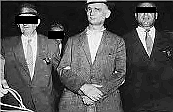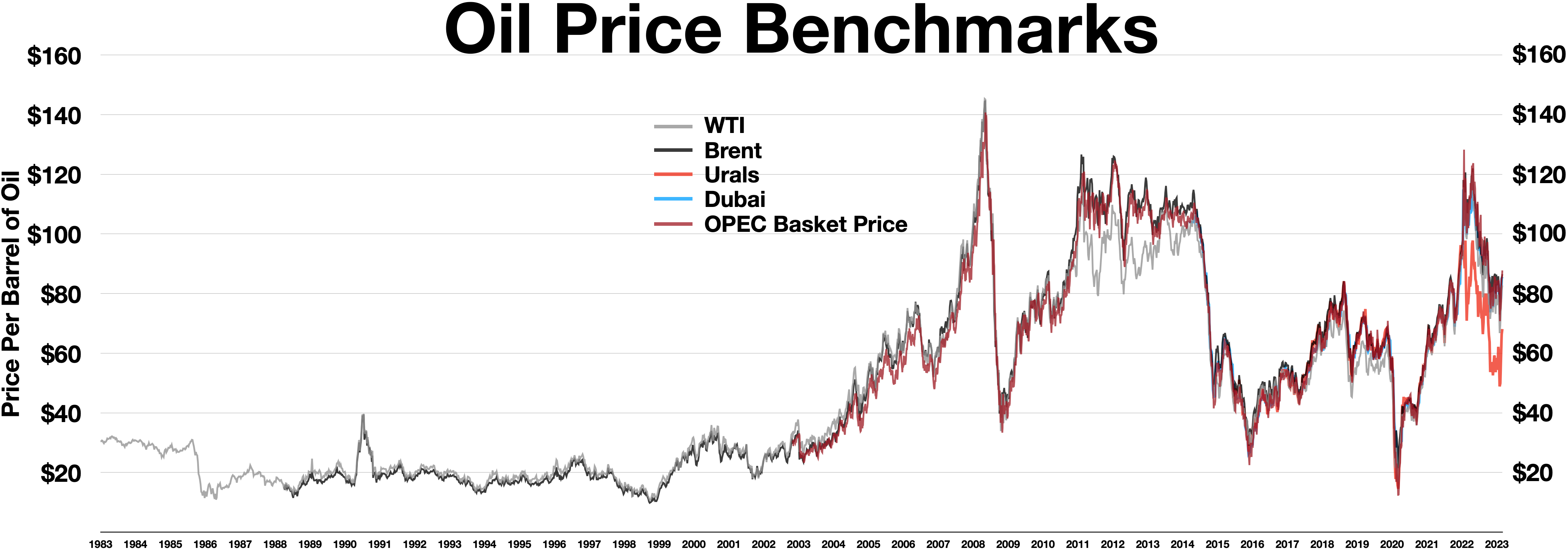|
Marcos Pérez Jiménez
Marcos Evangelista Pérez Jiménez (25 April 1914 – 20 September 2001) was a Venezuelan military officer and the dictator of Venezuela from 1950 to 1958, ruling as member of the military junta from 1950 to 1952 and as president from 1952 to 1958. He took part in the 1948 Venezuelan coup d'état, becoming part of the ruling junta. He ran in the 1952 election. However, the junta cancelled the election when early results indicated that the opposition was ahead and declared Jiménez provisional president. He became president in 1953 and instituted a constitution that granted him dictatorial powers. Under Pérez's rule, the rise of oil prices facilitated many public works projects, including roads, bridges, government buildings and public housing, as well as the rapid development of industries such as hydroelectricity, mining and steel. He also enriched himself considerably, as well as many of his political allies. The economy of Venezuela developed rapidly while Pérez was in ... [...More Info...] [...Related Items...] OR: [Wikipedia] [Google] [Baidu] |
President Of Venezuela
The president of Venezuela (), officially known as the president of the Bolivarian Republic of Venezuela (), is the executive head of state and head of government of Venezuela. The president leads the National Executive of the Venezuelan government and is the commander-in-chief of the National Bolivarian Armed Forces. Presidential terms were set at six years with the adoption of the 1999 Constitution of Venezuela, and presidential term limits were removed in 2009. The office of president in Venezuela has existed since the 1811 Venezuelan Declaration of Independence from the Spanish Crown; the first president was Cristóbal Mendoza. From 1821 to 1830, Venezuela was a member state of Gran Colombia, and the Venezuelan executive was absorbed by the Colombian government in Bogotá. When the State of Venezuela became independent from Gran Colombia, the office of the president was restored under José Antonio Páez. Every head of state of Venezuela since then has held the ti ... [...More Info...] [...Related Items...] OR: [Wikipedia] [Google] [Baidu] |
1958 Venezuelan Coup D'état
The 1958 Venezuelan coup d'état took place on 23 January 1958, when the dictator Marcos Pérez Jiménez was overthrown. A transition government under first Adm. Wolfgang Larrazábal and then Edgar Sanabria was put in place until December 1958 elections saw Democratic Action candidate Rómulo Betancourt elected and take office on 13 February 1959. One of Caracas' neighbourhoods, Barrio 23 de Enero (''23 January neighbourhood''), is named for the event. Events Background In December 1957 there was a referendum to extend the mandate of Pérez Jiménez to solidify his regime and legitimize the armed forces. The closest precedent for the coup occurred on New Year's Day, 1 January 1958, when Venezuelan Air Force fighter planes soared into the sky over waking Caracas. The shock was tremendous, even for the supporters of the government, after the recent referendum. The causes that led to the fall of Pérez Jiménez were twofold. Firstly, the military crisis, originating f ... [...More Info...] [...Related Items...] OR: [Wikipedia] [Google] [Baidu] |
Dirección De Seguridad Nacional
The Directory of National Security (, abbreviated as DSN) was the secret police of Venezuela from 1938 until is disestablishment in 1958. History The Directory of National Security was established in 1938 in Venezuela. The Seguridad Nacional was active during the presidencies of Eleazar López Contreras, Isaías Medina Angarita, Rómulo Betancourt, Rómulo Gallegos, Carlos Delgado Chalbaud, Germán Suárez Flamerich, and most notably, Marcos Pérez Jiménez. The purpose of the Seguridad Nacional was to investigate, arrest, torture, or assassinate political opponents to the Venezuelan government. From 1951 until 1953, the Seguridad Nacional operated a prison camp on , a forced labour camp. The Seguridad Nacional was abolished following the overthrow of Pérez Jiménez on 23 January 1958. Outraged citizens raided the DSN headquarters after Pérez Jiménez's removal, with some mobs killing DSN members throughout Venezuela and releasing prisoners from their custody. See als ... [...More Info...] [...Related Items...] OR: [Wikipedia] [Google] [Baidu] |
Secret Police
image:Putin-Stasi-Ausweis.png, 300px, Vladimir Putin's secret police identity card, issued by the East German Stasi while he was working as a Soviet KGB liaison officer from 1985 to 1989. Both organizations used similar forms of repression. Secret police (or political police) are police, Intelligence agency, intelligence, or Security agency, security agencies that engage in covert operations against a government's political, ideological, or social opponents and dissidents. Secret police organizations are characteristic of Authoritarianism, authoritarian and Totalitarianism, totalitarian regimes. They protect the political power of a dictator or regime and often operate outside the law to repress dissidents and weaken political opposition, frequently using violence. They may enjoy legal sanction to hold and charge suspects without ever identifying their organization. History Africa Egypt Egypt is home to Africa and the Middle East's first internal security service: The Stat ... [...More Info...] [...Related Items...] OR: [Wikipedia] [Google] [Baidu] |
Political Repression
Political repression is the act of a state entity controlling a citizenry by force for political reasons, particularly for the purpose of restricting or preventing the citizenry's ability to take part in the political life of a society, thereby reducing their standing among their fellow citizens. Repression tactics target the citizenry who are most likely to challenge the political ideology of the state in order for the government to remain in control. In autocracies, the use of political repression is to prevent anti-regime support and mobilization. It is often manifested through policies such as human rights violations, surveillance abuse, police brutality, kangaroo courts, imprisonment, involuntary settlement, stripping of citizen's rights, lustration, and violent action or terror such as murder, summary executions, torture, forced disappearance, and other extrajudicial punishment of political activists, dissidents, or the general population. Direct repression tact ... [...More Info...] [...Related Items...] OR: [Wikipedia] [Google] [Baidu] |
Economy Of Venezuela
The economy of Venezuela is based primarily on petroleum, as the country holds the largest crude oil supply in the world. Venezuela was historically among the wealthiest economies in South America, particularly from the 1950s to 1980s. During the 21st century, under the leadership of socialist populist Hugo Chávez and his successor Nicolás Maduro, the Venezuelan economy has collapsed, prompting millions of citizens to flee Venezuela. GDP has fallen by 80 percent in less than a decade. The economy is characterized by corruption, food shortages, unemployment, mismanagement of the oil sector, and since 2014, Hyperinflation in Venezuela, hyperinflation. As of 2024, inflation has stabilized at 59.61%. Venezuela is the List of countries by oil production, 25th largest producer of oil in the world and the 8th largest member of OPEC. Venezuela also manufactures and exports heavy industry products such as steel, aluminum, and cement. Other notable manufacturing includes electronics an ... [...More Info...] [...Related Items...] OR: [Wikipedia] [Google] [Baidu] |
Steel
Steel is an alloy of iron and carbon that demonstrates improved mechanical properties compared to the pure form of iron. Due to steel's high Young's modulus, elastic modulus, Yield (engineering), yield strength, Fracture, fracture strength and low raw material cost, steel is one of the most commonly manufactured materials in the world. Steel is used in structures (as concrete Rebar, reinforcing rods), in Bridge, bridges, infrastructure, Tool, tools, Ship, ships, Train, trains, Car, cars, Bicycle, bicycles, Machine, machines, Home appliance, electrical appliances, furniture, and Weapon, weapons. Iron is always the main element in steel, but other elements are used to produce various grades of steel demonstrating altered material, mechanical, and microstructural properties. Stainless steels, for example, typically contain 18% chromium and exhibit improved corrosion and Redox, oxidation resistance versus its carbon steel counterpart. Under atmospheric pressures, steels generally ... [...More Info...] [...Related Items...] OR: [Wikipedia] [Google] [Baidu] |
Mining
Mining is the Resource extraction, extraction of valuable geological materials and minerals from the surface of the Earth. Mining is required to obtain most materials that cannot be grown through agriculture, agricultural processes, or feasibly created Chemical synthesis, artificially in a laboratory or factory. Ores recovered by mining include Metal#Extraction, metals, coal, oil shale, gemstones, limestone, chalk mining, chalk, dimension stone, rock salt, potash, gravel, and clay. The ore must be a rock or mineral that contains valuable constituent, can be extracted or mined and sold for profit. Mining in a wider sense includes extraction of any non-renewable resource such as petroleum, natural gas, or even fossil water, water. Modern mining processes involve prospecting for ore bodies, analysis of the profit potential of a proposed mine, extraction of the desired materials, and final mine reclamation, reclamation or restoration of the land after the mine is closed. Mining ma ... [...More Info...] [...Related Items...] OR: [Wikipedia] [Google] [Baidu] |
Hydroelectricity
Hydroelectricity, or hydroelectric power, is Electricity generation, electricity generated from hydropower (water power). Hydropower supplies 15% of the world's electricity, almost 4,210 TWh in 2023, which is more than all other Renewable energy, renewable sources combined and also more than nuclear power. Hydropower can provide large amounts of Low-carbon power, low-carbon electricity on demand, making it a key element for creating secure and clean electricity supply systems. A hydroelectric power station that has a dam and reservoir is a flexible source, since the amount of electricity produced can be increased or decreased in seconds or minutes in response to varying electricity demand. Once a hydroelectric complex is constructed, it produces no direct waste, and almost always emits considerably less greenhouse gas than fossil fuel-powered energy plants. [...More Info...] [...Related Items...] OR: [Wikipedia] [Google] [Baidu] |
Public Works
Public works are a broad category of infrastructure projects, financed and procured by a government body for recreational, employment, and health and safety uses in the greater community. They include public buildings ( municipal buildings, schools, and hospitals), transport infrastructure ( roads, railroads, bridges, pipelines, canals, ports, and airports), public spaces (public squares, parks, and beaches), public services ( water supply and treatment, sewage treatment, electrical grid, and dams), environmental protection ( drinking water protection, soil erosion reduction, wildlife habitat preservation, preservation and restoration of forests and wetlands) and other, usually long-term, physical assets and facilities. Though often interchangeable with public infrastructure and public capital, public works does not necessarily carry an economic component, thereby being a broader term. Construction may be undertaken either by directly employed labour or by a ... [...More Info...] [...Related Items...] OR: [Wikipedia] [Google] [Baidu] |
Oil Prices
The price of oil, or the oil price, generally refers to the spot price of a barrel () of benchmark crude oil—a reference price for buyers and sellers of crude oil such as West Texas Intermediate (WTI), Brent Crude, Dubai Crude, OPEC Reference Basket, Tapis crude, Bonny Light, Urals oil, Isthmus, and Western Canadian Select (WCS). Oil prices are determined by global supply and demand, rather than any country's domestic production level. Through the years The global price of crude oil was relatively consistent in the nineteenth century and early twentieth century. This changed in the 1970s, with a significant increase in the price of oil globally. There have been a number of structural drivers of global oil prices historically, including oil supply, demand, and storage shocks, and shocks to global economic growth affecting oil prices. Notable events driving significant price fluctuations include the 1973 OPEC oil embargo targeting nations that had supported ... [...More Info...] [...Related Items...] OR: [Wikipedia] [Google] [Baidu] |






